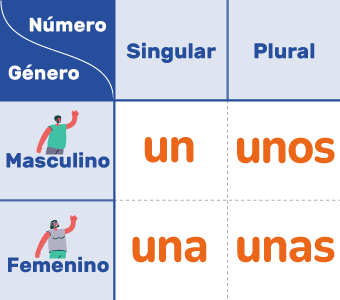Articles are a bit of a sensitive part of grammar, no matter what language you learn. Although the indefinite articles in Spanish are similar to articles in English, sometimes their usage causes confusion to students of Spanish.
Introduce something new
To begin with, we use indefinite articles “un”, “una”, “unos”, “unas” to introduce something new. They are also used when we make reference to something or someone as a part of a group. To illustrate, “Vivo en una ciudad ” – “I live in a city” or else “Visito a unos amigos” – “I visit some/ a few friends”.
Singular and plural nouns
Another important aspect to consider is the number, a noun can have two forms: singular and plural, so indefinite pronouns match the noun’s number. For example: “un parque” – “unos parques” denotes “a park” – “some/a few parks” respectively.
Gender awareness
One other relevant fact is gender (masculine and feminine). Phrases like: “una casa” (a house, feminine) and “un auto” (a car, masculine) are a case in point. Similarly happens to plural nouns, “unas casas” (some/a few houses) and “ unos autos” (some/a few cars).
Express quantity
Last but not least, definite articles can be used to express quantity. To give you an idea, “Un café, por favor” – “A coffee, please” which means “only one” or else “Compro unos lapiceros”- “I buy some pens.”
Having explored some key points to deal with indefinite articles, you can count on Bright Lingua to improve your skills in Spanish.


